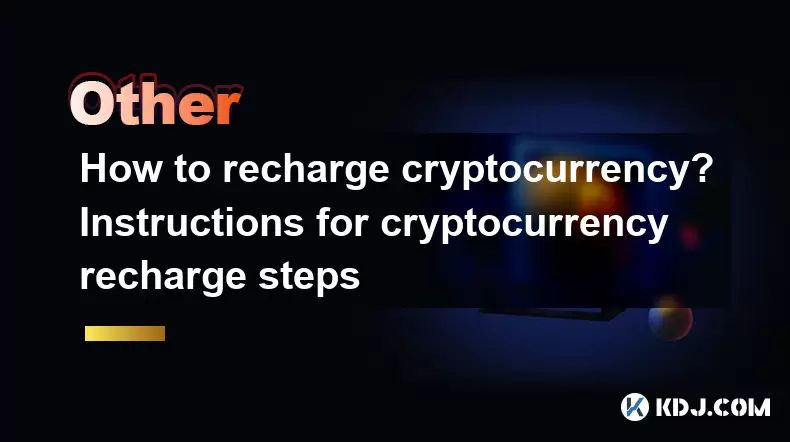-
 Bitcoin
Bitcoin $113600
-0.65% -
 Ethereum
Ethereum $3582
-2.02% -
 XRP
XRP $2.919
-4.02% -
 Tether USDt
Tether USDt $0.9999
-0.01% -
 BNB
BNB $749.8
-1.55% -
 Solana
Solana $162.1
-3.54% -
 USDC
USDC $0.9998
-0.01% -
 TRON
TRON $0.3318
-0.59% -
 Dogecoin
Dogecoin $0.1967
-4.77% -
 Cardano
Cardano $0.7148
-4.36% -
 Hyperliquid
Hyperliquid $37.30
-3.29% -
 Stellar
Stellar $0.3883
-4.29% -
 Sui
Sui $3.357
-4.00% -
 Bitcoin Cash
Bitcoin Cash $556.3
-1.84% -
 Chainlink
Chainlink $16.11
-4.08% -
 Hedera
Hedera $0.2344
-4.30% -
 Ethena USDe
Ethena USDe $1.001
0.00% -
 Avalanche
Avalanche $21.68
-4.66% -
 Litecoin
Litecoin $118.0
-3.37% -
 UNUS SED LEO
UNUS SED LEO $9.000
0.53% -
 Toncoin
Toncoin $3.161
-6.14% -
 Shiba Inu
Shiba Inu $0.00001193
-3.33% -
 Uniswap
Uniswap $9.434
-3.85% -
 Polkadot
Polkadot $3.577
-2.49% -
 Dai
Dai $0.9999
0.00% -
 Monero
Monero $288.7
-3.86% -
 Bitget Token
Bitget Token $4.209
-3.61% -
 Cronos
Cronos $0.1368
-1.06% -
 Pepe
Pepe $0.00001003
-4.60% -
 Aave
Aave $252.2
-3.73%
How to recharge cryptocurrency? Instructions for cryptocurrency recharge steps
Cryptocurrency recharge involves adding digital currency to a wallet or exchange, requiring careful steps like selecting the right network and verifying deposit addresses to avoid irreversible losses.
Jun 19, 2025 at 10:01 pm

What Is Cryptocurrency Recharge?
Cryptocurrency recharge refers to the process of adding digital currency to a wallet or exchange account. This is often necessary when users wish to increase their holdings, participate in transactions, or prepare for trading activities. Unlike traditional banking systems, cryptocurrency recharging involves blockchain technology and requires specific steps to ensure accuracy and security. Understanding how to correctly perform this action is crucial, as mistakes can lead to irreversible losses.
Selecting the Right Wallet or Exchange
Before initiating a recharge, it's essential to choose the correct wallet or exchange platform. Each service has different interfaces and procedures, so familiarity with your chosen platform is key. Popular options include Binance, Coinbase, Trust Wallet, and MetaMask. Ensure that the wallet or exchange supports the specific cryptocurrency you intend to recharge. For example, Ethereum (ETH) and Bitcoin (BTC) have different network protocols, and using the wrong one may result in lost funds.
Locating the Deposit Address
Once you've logged into your wallet or exchange, navigate to the deposit section. This is typically found under the "Wallet" or "Deposit" menu. Here, you will need to select the cryptocurrency you want to recharge. The system will generate a unique deposit address, which is a long string of letters and numbers. Some platforms also provide a QR code for easier scanning. It's important not to confuse deposit addresses between cryptocurrencies, as sending funds to the wrong address can result in permanent loss.
Choosing the Correct Network
When recharging, you must also choose the appropriate network. Most cryptocurrencies operate on multiple networks. For instance, USDT can be sent via TRC20, ERC20, or BEP20. Selecting the wrong network may cause delays or complete loss of funds. Always verify the network requirements with the receiving wallet or exchange. If unsure, consult the platform’s support documentation or contact customer service before proceeding.
Sending the Funds
After confirming the deposit address and network, proceed to send the cryptocurrency from your source wallet. Open your sending wallet, go to the "Send" section, and enter the deposit address copied from the receiving wallet or exchange. Double-check every character of the address to avoid any typos. Enter the amount you wish to recharge and confirm the transaction. Once confirmed, the transfer becomes irreversible. Transaction fees may apply depending on network congestion, so factor these into your total amount.
Monitoring the Transaction
After initiating the transfer, monitor the transaction status using the provided transaction ID (TXID). Most wallets and exchanges display this information once the transaction is submitted. You can paste the TXID into a blockchain explorer like Etherscan for Ethereum-based tokens or Blockchair for other coins. Wait until the required number of confirmations are met before assuming the recharge was successful. The number of confirmations needed varies by platform and cryptocurrency, but typically ranges from 1 to 30.
Common Errors and How to Avoid Them
One of the most frequent issues during a cryptocurrency recharge is sending funds to the wrong network or wallet type. Never send Ethereum to a Bitcoin address or vice versa, as this will result in permanent loss. Another common mistake is failing to cover transaction fees, which can leave the sender’s balance insufficient. Always ensure you have enough funds to cover both the transfer amount and the associated gas or network fees. Additionally, never share your private keys or recovery phrases during this process, as doing so compromises your assets.
Frequently Asked Questions
Q: Can I cancel a cryptocurrency recharge after it has been initiated?
No, once a cryptocurrency transaction is confirmed on the blockchain, it cannot be canceled or reversed. Always double-check all details before finalizing the transaction.
Q: Why hasn’t my recharge appeared in my wallet yet?
It could take several minutes to hours depending on network congestion and the number of confirmations required. Check the transaction status using the TXID to track its progress.
Q: What should I do if I sent crypto to the wrong address?
Contact the support team of the receiving platform immediately and provide the transaction details. Unfortunately, there is no guarantee of fund recovery, especially if the recipient does not cooperate.
Q: Do I need to pay fees every time I recharge crypto?
Yes, each blockchain transaction incurs a network fee, commonly referred to as gas fees for Ethereum-based transfers. These fees fluctuate based on network demand and must be paid in the native coin of the network being used.
Disclaimer:info@kdj.com
The information provided is not trading advice. kdj.com does not assume any responsibility for any investments made based on the information provided in this article. Cryptocurrencies are highly volatile and it is highly recommended that you invest with caution after thorough research!
If you believe that the content used on this website infringes your copyright, please contact us immediately (info@kdj.com) and we will delete it promptly.
- DeriW Mainnet: Zero Gas Fees Revolutionize On-Chain Derivatives Trading
- 2025-08-06 10:30:11
- IOTA, Cloud Mining, and Eco-Friendly Crypto: A New York Investor's Take
- 2025-08-06 10:30:11
- Kaspa (KAS) Price Prediction: August 6 - Will It Break Free?
- 2025-08-06 10:50:12
- Meme Coin Mania: Arctic Pablo's Token Burn Ignites Presale Frenzy
- 2025-08-06 10:50:12
- Pi Network, Holders, and Market Turbulence: Navigating the Crypto Storm
- 2025-08-06 10:55:12
- XRP, DOGE, and the Altcoin Darling Dilemma: Where's the Alpha?
- 2025-08-06 08:30:11
Related knowledge

What is the purpose of a nonce in mining?
Aug 04,2025 at 05:56pm
Understanding the Role of a Nonce in Cryptocurrency MiningIn the world of cryptocurrency mining, the term nonce stands for 'number used only once.' Th...

Can data on a blockchain be deleted?
Aug 05,2025 at 04:00am
Understanding Blockchain ImmutabilityThe core principle behind most blockchain systems is immutability, which means that once data is recorded onto th...

What is the difference between on-chain and off-chain transactions?
Aug 02,2025 at 04:22pm
Understanding On-Chain TransactionsOn-chain transactions refer to digital asset transfers that are recorded directly on a blockchain ledger. These tra...

How are blocks linked together?
Aug 04,2025 at 06:56am
Understanding the Structure of a BlockchainA blockchain is a decentralized digital ledger composed of a sequence of blocks, each containing a list of ...

Can a blockchain be hacked?
Aug 05,2025 at 08:29am
Understanding Blockchain Architecture and Security PrinciplesBlockchain technology is built on a decentralized and distributed ledger system that reco...

What is a node's role in a blockchain network?
Aug 03,2025 at 03:16pm
Understanding the Function of a Node in a Blockchain NetworkA node is a fundamental component of any blockchain network, acting as a participant that ...

What is the purpose of a nonce in mining?
Aug 04,2025 at 05:56pm
Understanding the Role of a Nonce in Cryptocurrency MiningIn the world of cryptocurrency mining, the term nonce stands for 'number used only once.' Th...

Can data on a blockchain be deleted?
Aug 05,2025 at 04:00am
Understanding Blockchain ImmutabilityThe core principle behind most blockchain systems is immutability, which means that once data is recorded onto th...

What is the difference between on-chain and off-chain transactions?
Aug 02,2025 at 04:22pm
Understanding On-Chain TransactionsOn-chain transactions refer to digital asset transfers that are recorded directly on a blockchain ledger. These tra...

How are blocks linked together?
Aug 04,2025 at 06:56am
Understanding the Structure of a BlockchainA blockchain is a decentralized digital ledger composed of a sequence of blocks, each containing a list of ...

Can a blockchain be hacked?
Aug 05,2025 at 08:29am
Understanding Blockchain Architecture and Security PrinciplesBlockchain technology is built on a decentralized and distributed ledger system that reco...

What is a node's role in a blockchain network?
Aug 03,2025 at 03:16pm
Understanding the Function of a Node in a Blockchain NetworkA node is a fundamental component of any blockchain network, acting as a participant that ...
See all articles

























































































